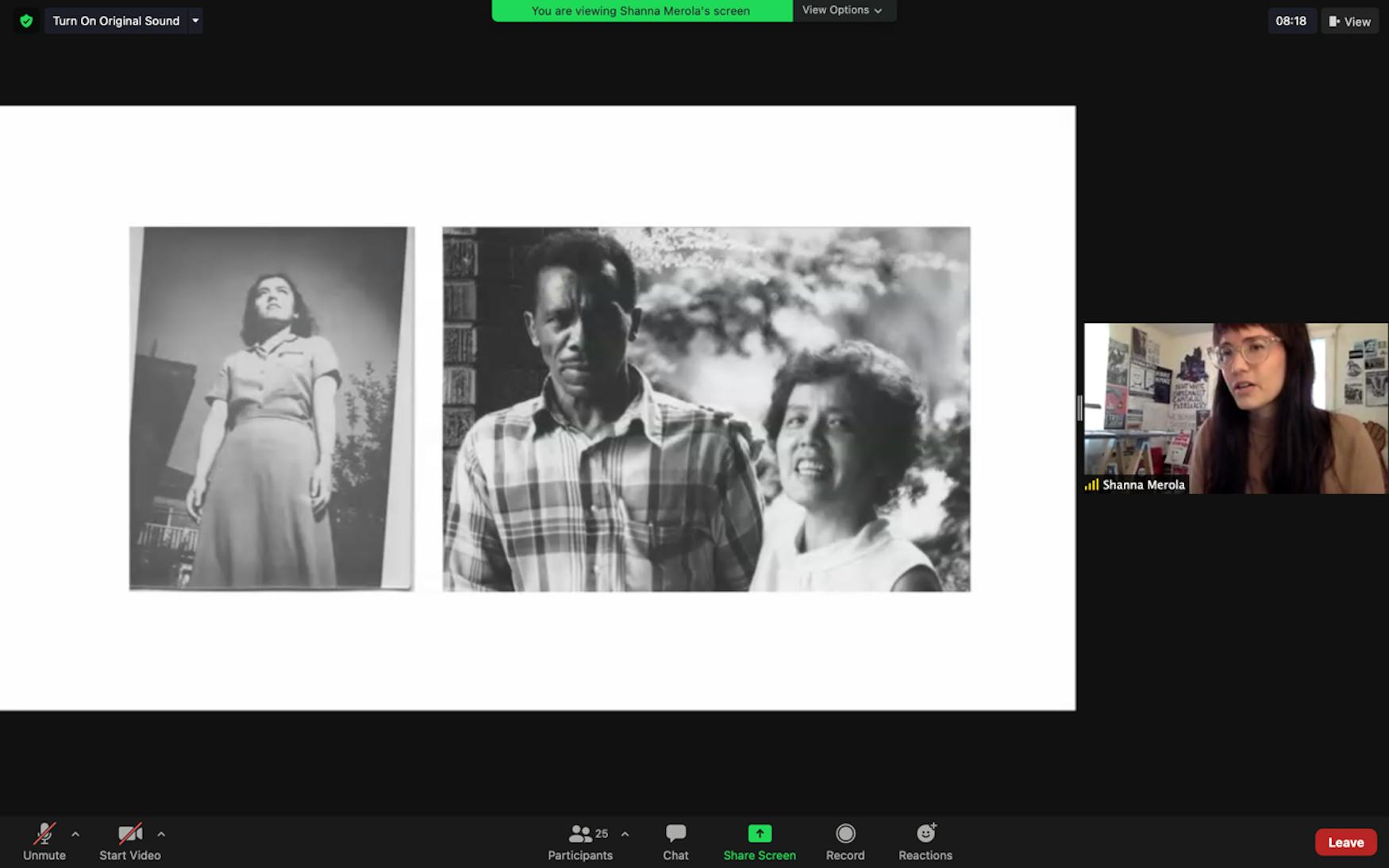Artist Shana Merola combines political activism and photography in artist talk
Over the past few months, American interest in civil disobedience has exploded, leading to increasing amounts of people participating in protests and social justice campaigns. However, some have been involved in this form of activism for years prior. One of these people is visual artist, photojournalist and legal worker Shanna Merola, who gave a talk via Zoom to Brandeis students where she detailed both her artistic work and her work with activism near her hometown of Detroit, Michigan. Prof. Sheida Soleimani (FA) hosted the talk, which took place on March 15 and was sponsored by the Brandeis Department of Fine Arts.
When speaking about her style, Merola described her work as weaving “in and out of activism and conceptual art” and stated that it “lies at the intersection of photography, grassroots organizing and the legal system.” These characteristics were reflected greatly in her work, which was largely comprised of collages made from both photographs she took and pictures from the internet. One of the most striking series of collages Merola displayed was a part of the “Black Day in July” series. In this series, she utilized photographs from military occupation during the Detroit Rebellion in 1967. Her pieces in this series combine images of animals such as pigs and black panthers and overlay them on top of images of the National Guard. The pig and black panther, each representing a different side of the conflict, are powerful symbols that the viewer can instantly recognize. Accompanying these works were video testimonies from people who witnessed and lived through the events, which further showed the trauma these events have caused.
Merola also showcased her series “oil + water” to show her support for the environmental preservation movement in post-industrial societies. She collaborated with filmmaker Kate Levy for this series. Merola described the series as combining legal documentation with photographs and said that “the work alludes to post-industrial landscapes.” The works themselves contain photographs of places that have been affected by “the oil and gas industry, privatization of water and heightened militarization of local police agencies,” she said. These places include Detroit, Flint, the areas affected by superstorm Sandy in 2012, New Orleans and various locations in North Dakota. The photographs contain images of police clashing with protest groups in these various areas. There are also images that show the environmental struggle many citizens are facing in these affected areas. Merola was personally invested in this particular crisis as she worked with the organization Detroit Resists, “a coalition of activists, artists, architects, and community members working on behalf of an inclusive, equitable, and democratic city,” per their website. This is not Merola’s only experience with legal activism, as she also served as a legal observer in the Detroit chapter of the National Lawyers Guild.
The final series of collages that Merola presented was called “we all live downwind.” In this series, she was inspired by author and social activist Naomi Klein’s book, “The Shock Doctrine,” which is about how various countries have adopted neoliberal economies that ultimately benefit the rich and hurt the poor. These collages searched for the effects of industrialization and were inspired by dystopian, post-industrial landscapes, Merola said. This inspiration shines through in her collages as they combine natural objects and people with images of man-made pollution and destruction. Images of body parts, such as eyes, and bleak landscapes are layered with oil rigs and pipelines shows how industries are invading the natural world. This again ties into the overarching themes in Merola’s work, such as the struggle between nature and industry, and supports Klein’s thesis about how industry violently seizes control of economies around the world, disrupting the natural order.
Overall, this was a powerful collection of works that really showcases Merola’s background in both legal activism and photography. Her medium of choice — collages — was an effective way to showcase the effects industrialization has had on the nature and people of the United States. Her fascination with the material that the mainstream media often fails to pick up shines through in her work and brings attention to these often overlooked “post-industrial places,” as she describes them.
Merola’s next focus will be on the environmental disaster at Love Canal in Niagara Falls, New York. She described this disaster as being “the United States’ Cherynobl,” albeit a bit less dramatic. She has started creating collages about this issue and plans on doing more investigative journalism about it. Through this project, she will most certainly bring attention to this often ignored environmental disaster and will help educate the masses on how they can help these afflicted areas.



Please note All comments are eligible for publication in The Justice.